A number of samples were progressively sanded to higher and higher grits and their chatoyance was measured at each step. The results are summarized in table below:
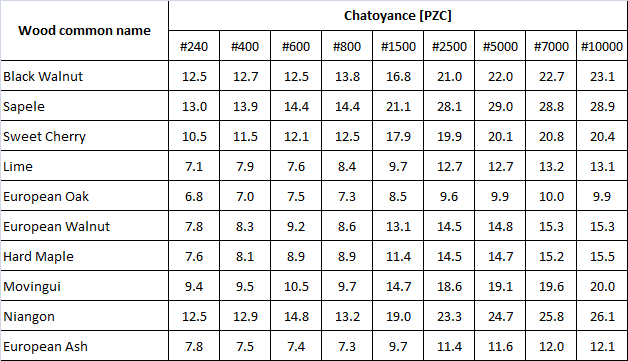
The same data are shown in chart below:
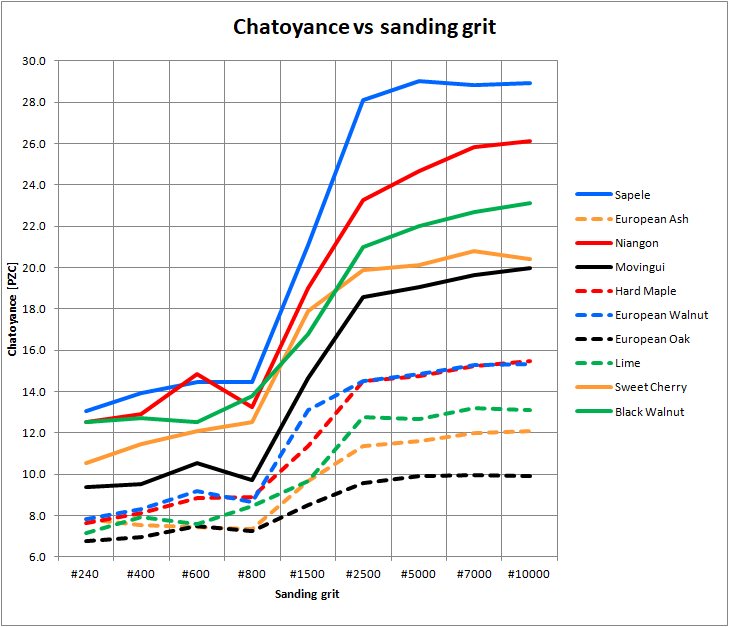
The chart clearly shows a sharp increase in chatoyance when going from 800-grit to 2500-grit for all the 10 species. More details about the Black Walnut samples can be found at the bottom of the page.
Pictures below show some comparison between the 800-grit and the 2500-grit steps:












This set of tests started with an Iroko wood sample which was sanded to 7 different grits, and its chatoyance was measured at each step.
| Step | PZC (Pos. 1) | PZC (Pos. 2) | PZC (Pos. 3) | PZC (Average) |
| 120-grit | 12.3 | 12.1 | 10.9 | 11.8 |
| 180-grit | 12.3 | 11.5 | 11.0 | 11.6 |
| 240-grit | 11.3 | 11.5 | 10.9 | 11.2 |
| 320-grit | 15.4 | 14.7 | 15.2 | 15.1 |
| 600-grit | 14.4 | 13.0 | 14.0 | 13.8 |
| 800-grit | 20.6 | 20.1 | 21.1 | 20.6 |
| 1500-grit | 25.9 | 25.9 | 25.0 | 25.6 |
Interestingly, chatoyance did not always increase with grit.







The black walnut sample was actually a pair of samples which were then cut and bookmatched to compare the effects of progressive sanding and then finishing.
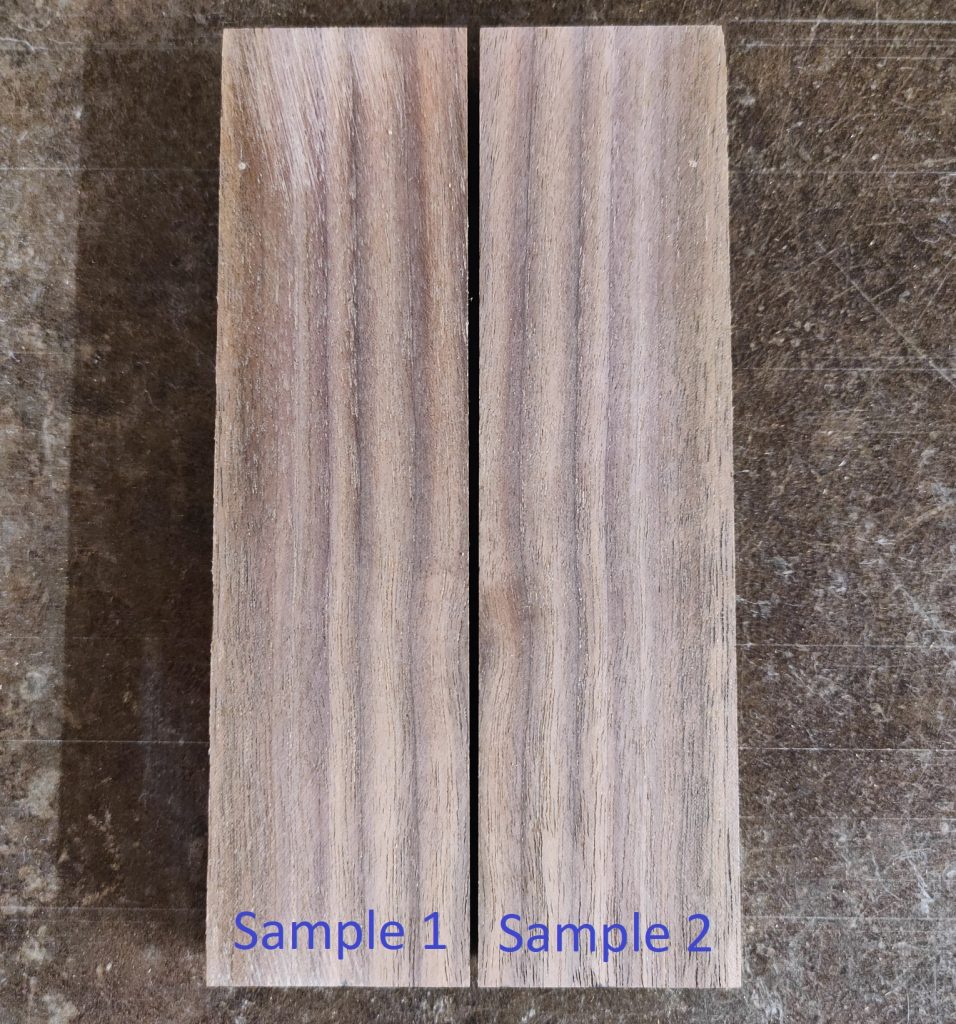
Sample 1 was subjected to 14 sanding steps (from 80-grit to 10’000 grit) and its chatoyance was measured at each step. Sample 2 was sanded up to 240-grit where its chatoyance was measured. Then they were finished with blonde dewaxed “medium” shellac (2 parts in 13 parts of Alcohol).
Interestingly, chatoyance seems to continuously increase with grit, and even at 10’000 it does not appear to have reached an asymptote. In addition, chatoyance after finishing appears significantly higher on the fine-sanded sample.
Table and chart below summarize the results:
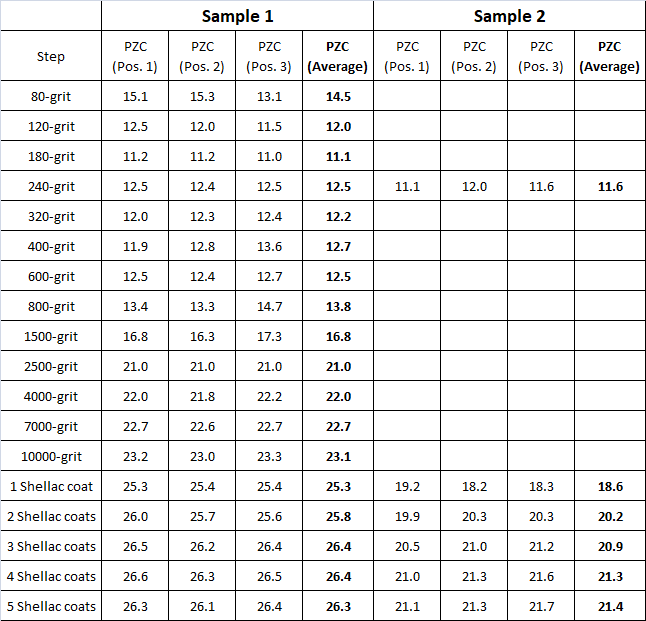
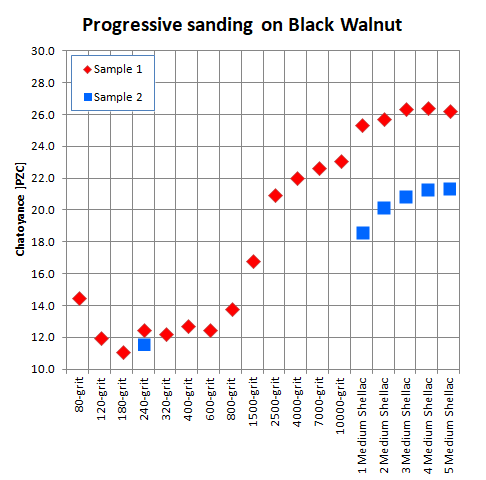






Very interesting. The black walnut pair suggest that 5 coats over 249 grit will give a similar result to 3 coats over 10,000 grit. Not quite as good, but similar. Very good demonstration.
Thank you. Chatoyance after finishing on the 10’000-grit sanded sample is 5 points higher (26.4 vs 21.4) – this is a perceivable difference.
Interesting, good work. I’d love to see more progressive comparisons with shellac, though I understand that’s a much more challenging test to do!!
Hi there. Have a look here:
https://www.chatometry.com/ultra-fine-sanding/
Does it provide the kind of data you were looking for?